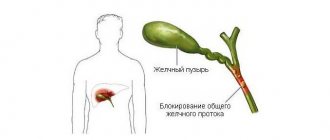Bulimia nervosa is a mental disorder with an eating disorder. It is characterized by recurrent bouts of overeating due to a sharp increase in appetite. After overeating, compensatory behavior sets in, a person experiences a strong feeling of guilt and remorse, tries to cleanse the body of excess food by taking laxatives and diuretics, artificially inducing vomiting, can exercise intensely, starve, or go on strict diets. On average, episodes of overeating occur one or more times a week, over several months. Bouts of overeating usually provoke the appearance of negative emotions, fatigue, anxiety, and depression.
What is an eating disorder (ED)? A group of psychogenically caused disorders in which there is a severe disturbance in the perception of nutrition and one’s own body. Eating disorders include anorexia, bulimia, compulsive overeating and mixed eating disorders.
Most often, bulimia develops between the ages of 15 and 25; about 90% of cases occur in women. The risk group mainly includes girls whose lifestyle is related to keeping in shape - dancers, gymnasts, models. Close people who criticize the child’s appearance have a great influence on the development of the disorder. Bulimia nervosa occurs in certain mental disorders, diseases of the endocrine and central nervous systems. People with bulimia seek medical help 2 times more often than people with anorexia. But timely diagnosis can be difficult due to a person’s concealment of his condition.
Bulimia often occurs hidden from others, especially in adolescents. Diagnosis of this type of mental eating disorder is possible based on the results of a clinical study and conversation. Relatives can assume the presence of bulimia if a person avoids sharing food, eats often and abundantly, but does not gain or gains little weight, eats large meals at night, and goes to the toilet every time after eating. Sometimes bulimia is accompanied by self-harm and suicide attempts.
As a result of limiting food intake, control over the amount of food eaten is lost, compulsive overeating occurs, which can lead to weight gain and even greater feelings of guilt because of this. Compulsive overeating lasts up to several hours, during which time a person consumes calories several times higher than the daily norm. It is often difficult to distinguish bulimia from anorexia; with these mental disorders, there is an independent restriction in the amount of food and inadequate compensatory behavior. If we consider compulsive overeating as an independent disorder, it is not accompanied by subsequent cleansing actions.
Bulimia causes physical health problems. Erosion of tooth enamel is possible due to the acidic environment of the vomit. Nutrient deficiency and dehydration, after constant use of drugs and induced bouts of vomiting, leads to electrolyte imbalance in the body, convulsions, heart rhythm disturbances and other consequences.
Causes
Bulimia is a polyetiological disorder. A combination of external and internal factors can provoke its development. There is no direct connection between gender and age, but it is most common in women. Many people with bulimia are of normal weight and have no previous history of eating disorders. On average, bulimia occurs at an older age; anorexia, on the contrary, is most susceptible to teenagers, and the cause of the development of the disorder is often a strong desire to lose weight. Self-esteem is usually low. The most common risk factors for the disorder are:
- heredity;
- female;
- end of puberty;
- affective lability;
- diseases of the endocrine system;
- organic brain lesions;
- metabolic disorders;
- unstable self-esteem.
Consequences
Okay, so what's so scary about that? Well, I ate too much - vomited, worked out or took a laxative, is it really that dangerous?
There is an opinion among people that if anorexia is fraught with serious health consequences, then they don’t die from bulimia - “all girls do it.” In fact, bulimia can be fatal and extremely damaging to your health.
The human body is not designed to spew out what it has just eaten - the bulimic’s body begins to consistently break down from the inside. The teeth suffer because gastric juice enters the mouth along with food. Anemia and tachycardia develop—the body lacks microelements. The endocrine system suffers - bulimics often experience hormonal destabilization and disruption of the thyroid gland. Gastritis and disorders of the gastrointestinal tract are also typical.
The most common causes of the disorder are:
Concomitant somatic diseases. Sometimes bulimia is provoked by physiological pathologies - metabolic disorders (insulin resistance, metabolic syndrome), damage to the center of the cerebral cortex (can lead to a constant feeling of hunger and uncontrolled food consumption), diseases with hormonal disorders (hyperthyroidism, diabetes mellitus).
Mental disorders. People with bulimia often have other mental disorders - the most common being anxiety and depressive disorders. There are concomitant anorexia nervosa, obsessive-compulsive disorder, schizophrenia, and some personality disorders. Often there are previous episodes of anorexia nervosa with remission between it and bulimia from several months to several years. The previous episode may be fully expressed or occur in a mild latent form with moderate weight loss and/or a transient period of amenorrhea (menstrual irregularities). Bulimia nervosa is usually a stage or variant of anorexia nervosa, but can be a separate syndrome in some mental illnesses.
Personal characteristics. The disorder mainly occurs in people with affective lability, low self-esteem, increased feelings of responsibility and guilt, problems with self-control, difficulty expressing feelings, and strong dissatisfaction with their body.
Social reasons. Eating “for company”, out of boredom, the habit of finishing a portion, even with a developed feeling of fullness. Sometimes bulimia becomes a consequence of poor nutrition in the family, with a low financial situation. Some parents push their child toward an eating disorder at an early age by using food as a comfort and reward. Children who are subject to criticism of their weight or body are highly vulnerable and at high risk of developing an eating disorder, and the same applies to children who have experienced inappropriate sexual treatment.
Psycho-emotional stress. People who do not tolerate stressful situations well or are constantly exposed to them often “eat” stress. In the early stages, severe emotional stress contributes to the development of the disorder. An attack of overeating begins from a feeling of strong internal tension, temporarily compensated by food intake. Overeating provokes feelings of guilt and remorse, as well as fear of weight gain. Compensatory behavior reduces feelings of guilt caused by overeating. Binges and purging progress over a short period of time and begin to appear much more frequently.
Bulimia at different ages
Today, about 20% of children and adolescents suffer from bulimia, 30% of men, 50% of women.
In children, bulimia often occurs due to nervousness, when the child’s psyche is not yet fully formed and a series of psychological stress follows. In addition, bulimic children are often raised in families where parents also once suffered from bulimia. If in childhood the child’s nutrition is not balanced, the diet and eating patterns are often disrupted, and there are moments in parental education that force him to eat when he is not hungry, then the likelihood of developing bulimia in adolescence sharply increases. When a child often experiences negative nervous shocks (parental divorce, domestic violence, conflicts with peers), his appetite may also increase. However, bulimia should not be confused with the usual recovery of the body after an illness or intense physical/mental stress.
Symptoms of childhood bulimia
- metabolic disorders (diabetes mellitus and others);
- habit of excess food consumption;
- psychological problems;
- mental imbalance.
In adolescents, bulimia can occur for many reasons. Most often, the source of the disease is watching food advertisements, imitating peers or celebrities, or growing up in a codependent family.
Symptoms of teenage bulimia
- constant thoughts about food;
- “cult of food”, when food occupies a central place in the hierarchy of values;
- strong fear of getting fat, low self-esteem.
Bulimia in men and women
- excess weight (obesity);
- depression, apathy, depression;
- strong dependence on food.
- increased anxiety and chronic stress;
- taking medications against the background of a somatic or mental illness.
Men, unlike women, rarely use medications (laxatives) and even less often induce vomiting.
Symptoms
With bulimia, somatic and physiological abnormalities are expressed; pronounced psychosomatics predominate. Therefore, diagnosing the disorder is not difficult.
Symptoms of bulimia are considered to be:
- constant feeling of hunger and lack of feeling of fullness;
- regularly recurring bouts of overeating for an unlimited period of time;
- lack of control over systemic food intake; a person can eat more than 5,000 calories at one time;
- lack of full awareness of the process of eating - eating incompatible foods together, sometimes a person does not remember what and in what quantities he ate;
- visiting the toilet after each meal in order to “cleanse” the body (induced vomiting, taking laxatives and diuretic tablets, enemas, etc.)
- tendency to abuse physical activity in order to burn calories and use them as punishment for the food eaten;
- obsessive worries about your weight;
- frequent fluctuations in body weight;
- psychological dependence of the emotional state and self-esteem on food directly or indirectly (weight, body proportions, ability to follow a diet, etc.), failure to meet the criteria set for oneself provoke feelings of shame, guilt, and self-hatred.
Overeating is defined as eating a quantity of food that is significantly greater than the average amount consumed by most people under similar circumstances, accompanied by a feeling of loss of self-control.
During episodes of overeating, a person prefers to eat foods high in fat and carbohydrates (flour, sweets, confectionery, fried foods, etc.). The amount of food consumed varies, but the value is always several times higher than average. Overeating is usually episodic and often triggered by psychosocial stress.
Weight is not a defining symptom in bulimia nervosa. Women suffering from this disorder may have normal body weight, or be underweight or overweight. With anorexia and bulimia, patients are afraid of gaining weight and strive to lose weight due to dissatisfaction with their figure.
Bulimia is usually carefully hidden from family, as it is accompanied by feelings of shame and guilt. The binge-vomiting cycle can occur anywhere from several times a week to several times a day.
At the onset of bulimia, symptoms and disorders are subtle—visible symptoms associated with sudden weight changes or nutritional deficiencies. Over time, as the disorder progresses, the patient loses control over the situation, due to a deficiency of substances, the body requires more and more food, and vomiting has to be induced more often.
Bulimia always leads to disruptions in the functioning of various body systems.
- hair loss, brittle nails, dry and flaky skin;
- inflammation of the oral cavity;
- thinning of tooth enamel, increased sensitivity of teeth, risk of caries - with frequent induction of vomiting;
- swelling of the cervical and submandibular salivary glands;
- dehydration;
- electrolyte imbalance;
- gastroenterological problems;
- menstrual irregularities up to amenorrhea;
- anemia and its accompanying symptoms - deterioration in general health, dizziness, weakness, increased fatigue, fainting;
- depressive symptoms, alternating with euphoria or irritability, tearfulness.
- this does not apply here;
What threatens digestion?
With bulimia, the digestive system is the first to suffer. This is due to the effect of an excess amount of acid in the gastric juice, overstretching of the stomach walls, and weakness of its sphincters.
When bulimia frequently consumes large amounts of food, the stomach is always in a full state. The contractility of the sphincter located between it and the esophagus is impaired. Large food volumes stimulate the synthesis of gastric juice in increased quantities.
As a result, the patient faces a disease such as chronic gastric reflux, when excess stomach contents enter the esophagus through a sphincter that is not completely closed. As a result, a person is bothered by constant heartburn, pain in the epigastrium, behind the sternum and under the shoulder blades.
By sending large volumes of food to the stomach and stimulating the production of gastric juice, a patient with bulimia will definitely develop a peptic ulcer. This is explained by the following: he will subsequently remove the food by vomiting, and the juice will remain and begin to corrode the gastric walls.
Vomit that systematically passes through the esophagus will inevitably cause damage to it: inflammation and ulceration of its mucous membrane, pain when swallowing, a feeling of a lump in the throat, vomiting mixed with blood.
There may be such a thing as “Mallory-Weiss tears.” It is characterized by damage to the esophagus, its abdominal part and the upper part of the stomach, when their surfaces become covered with cracks. In appearance they really resemble a tear. The phenomenon is characterized by pain in the stomach, frequent vomiting or vomiting with fresh or clotted blood.
The syndrome very often accompanies the disease. In exceptional cases, it is complicated by rupture of the esophageal wall.
Once in the oral cavity, vomit and the hydrochloric acid it contains act on the tooth enamel, as if dissolving it. First, during this process, caries develops, and then deeper destruction of the dental tissue. In this case, dental damage is always symmetrical at the top and bottom of the jaws.
The release of hydrochloric acid into the oral cavity during vomiting maintains an acidic environment in it. This stimulates the increased work of the salivary glands and leads to their hypertrophy. They increase in size, and this gives the face a swollen and puffy appearance.
You may notice damage and abrasions on the fingers of bulimics. They earn them while inducing vomiting, when they move their fingers to the root of the tongue and injure them against the teeth. These lesions then develop into scars on the hands and wrists.
Just as fingers are injured on teeth, they themselves can damage the mucous membranes of the oral cavity and pharynx when they are placed in the mouth. Such chronic mechanical damage tends to become infected and ulcerate, since the acidity is currently high and there is little saliva, which is a natural disinfectant.
If we come from the “other side,” patients with kinorexia are often bothered by hemorrhoids. Hemorrhoids, like dilation of the anal veins, develop with frequent use of laxatives that cause diarrhea.
The digestive system of people with bulimia is widely affected. This causes them a lot of discomfort, painful and painful sensations, and slows down the absorption of nutrients.
The difference between bulimia and anorexia
Anorexia nervosa is an eating disorder characterized by an obsession with losing weight and a distorted body image. Anorexia is a serious and often life-threatening condition, and in some cases difficult to treat. A person’s life becomes focused on the topic of weight and food, and their emotional state and quality of life deteriorate. Anorexia occurs 20 times more often in women than in men.
With anorexia, weight loss comes to the fore, due to severe restriction of the amount of food or fasting, while with bulimia, the main phenomenon is overeating followed by ridding the body of the food eaten. Bulimia is usually a stage of anorexia.
The presence of a disorder can be assumed if the following manifestations are present:
- complete refusal of food (fasting), often explaining this as health improvement (therapeutic fasting, yoga);
- maintaining a strict diet with a daily calorie content of less than 1500 kcal (does not meet the body’s needs for nutrients and energy);
- poor nutrition (a person adheres to a diet, eating exclusively a certain type of food - vegetables, cereals, fruits)
With bulimia nervosa, the volume of a single meal is large. Preventing weight gain occurs by disrupting the absorption of food in the digestive tract, using drugs, vomiting and other methods. With anorexia, weight loss occurs due to the body's destruction of muscle tissue to replenish energy. But various drugs that reduce appetite, diuretics, laxatives, etc. can also be used. Over time, cachexia (severe exhaustion) develops. Cachexia leads to disruption of the functioning of all internal organs, which can become irreversible. Therefore, people who suffer from bulimia need urgent psychiatric help.
Typically, compared with anorexics, patients with bulimia nervosa are more aware of their behavior and feel more regret or guilt about it. They are less socially isolated and prone to impulsive behavior and alcohol and substance abuse. Depressive and anxiety disorders are common in such patients. A person suffering from anorexia does not realize that he is ill. He explains his behavior by the presence of excess weight (even in its absence); according to him, any meal leads to a feeling of even greater weight gain.
The effect of bulimia on the body
Psychosomatics is the influence of the psyche on the somatic state, that is, the health of the patient. Bulimia may cause:
- dehydration, kidney damage due to forced vomiting, diarrhea, taking diuretics;
- rupture of the stomach, esophagus due to severe vomiting, excessive food intake;
- decayed teeth and gum disease caused by stomach contents;
- deterioration of digestion and intestinal function;
- heart rhythm disturbances, weakening of the heart muscle due to loss of magnesium and potassium.
Classification and stages of development of bulimia
Bulimia develops in two forms - primary and secondary, and has a different clinical picture.
Primary
The disorder is characterized by a constant feeling of hunger
Secondary.
Occurs as a consequence of anorexia Accompanied by a constant feeling of hunger and the likelihood of compulsive overeating After overeating ends, a person induces vomiting or uses other methods to “cleanse” the gastrointestinal tract, amid feelings of guilt. In the absence of guilt, usually after overeating, a person begins to limit his diet more.
The stages of bulimia are difficult to differentiate and are conditional. The course depends on the intensity of the manifestation of the main symptoms. Stages can replace each other over time, periods of remission and relapses are possible.
Initial stage.
The initial stage of the development of bulimia can be considered the intensity of “purging” 1-3 times a month. With this course, bulimia can develop up to several years. Parents and close people who have authority with the child have a great influence. Habits and possible actions to overcome problems are formed. As the disorder develops, the results of weight loss are perceived positively and shift attention away from underlying subconscious problems. With a lack of nutrients and an increase in hunger, a large amount of food is perceived by the body as positively. As bulimia develops, the desire to lose weight and cravings for food intensify. The amount of food necessary for normal well-being increases, but brings less pleasure. Under the influence of thoughts about losing weight or after one of the overeatings, inappropriate compensatory behavior occurs. The initial stage responds well to treatment with group therapy on an outpatient basis.
Chronic bulimia
. The chronic course of bulimia is considered to be its duration of more than 5 years with daily attacks of overeating and “purging” or more than 7 years with the frequency of attacks once a week. Constant discomfort begins to express itself in the development of depressive states, neuroses and phobias. The feeling of control over your life disappears.
Clinically complex cases of bulimia
. Bulimia negatively affects the condition of the entire body, impairing the normal functioning of organ systems. A clinically complex course of the disorder is considered to be the presence of concomitant diseases and complications. Most often, treatment is carried out in a hospital setting, for emergency reasons.
Clinical picture of the disease
Statistics say that young women, between the ages of thirteen and thirty years, are most susceptible to this disease. Although bulimia also occurs in men, it is much less common. Recently, mild types of the disease have often been detected in both sexes. Signs of the disease are especially pronounced in adolescents. Teenage or childhood bulimia usually occurs as a result of a child’s dissatisfaction with his own appearance or inconsistency with certain canons of beauty. Therefore, they begin to adhere to strict diets, monitor their own weight, and in case of overeating, artificially induce vomiting.
This disease almost always begins with an increase in appetite, severe attacks of hunger and the inability to control them. Patients with bulimia very often hide the symptoms of the disease from strangers and almost never eat large amounts of food in public. But when left alone, they indulge in gluttony, after which they get rid of the food they have eaten, which is helped by artificially induced vomiting. Patients suffering from this disease typically eat food in the evening and even at night.
The stages of bulimia are often classified according to the intensity of the symptoms expressed, the degree of damage to internal organs and body systems, as well as the frequency of clinical signs.
The initial stage of bulimia is characterized by vomiting no more than one to three times a month. Its duration usually ranges from one to three years, but it may vary in each individual case. In addition, very often in the initial stages a remission occurs, characterized by the absence of behavioral symptoms of bulimia for several months. During such periods, patients suffering from this disease are deeply convinced that this is wrong, but it is possible to live with it and not dangerous.
Bulimia progresses quite quickly. Gradually, thoughts about food come to the fore and occupy every day of the patient’s life. This usually characterizes stage 2 of the disease or chronic bulimia. It happens that at this stage there are periods of exacerbation and remission. Family conflicts, problems at work, interpersonal relationships fade into the background. The priority for such people is only the absorption of food. The frequency of vomiting in chronic bulimia reaches seven times a day.
The severe stage of the disease is characterized by serious disturbances in the functioning of the gastrointestinal tract. During such a period, vomiting may occur involuntarily, and when it is induced, an admixture of blood often appears. Bulimia in its final stages requires hospitalization, as it provokes the development and exacerbation of many chronic diseases.
It is necessary to hospitalize the patient in the following cases:
- critical weight loss;
- severe exhaustion of the body;
- severe depression;
- severe dehydration.
Such conditions are a threat to the patient's life. There are cases where this disease led to the death of a person as a result of heart failure caused by severe dehydration and loss of a significant amount of vital minerals. Death is also possible due to mechanical damage to the esophagus and stomach, or perforation of the intestinal walls.
Bulimia significantly affects the patient’s psyche, so as the disease progresses, the depressive syndrome may increase. Multiple facts indicate that even in the initial stages of the disease, mental disorders, neurasthenia and other pathologies of the nervous system can progress.
Diagnostics
Diagnosis is made based on clinical criteria and conversation with the patient. To identify the presence of complications, additional laboratory and instrumental studies are prescribed.
Diagnostic clinical criteria for bulimia nervosa include recurrent bouts of overeating, accompanied by loss of control over the amount of food consumed and inadequate compensatory behavior, on average once a week, for more than 3 months. Self-esteem directly depends on body weight.
Katya's story
Katya is 27 years old. Katya starts every morning with black coffee, an egg and a cucumber. No bread. She is a successful PR specialist, passionate about her work... and “You understand, we work with celebrities, it is very important to look good.” Katya easily lights up, takes on new things with pleasure, and understands nutrition no worse than a professional nutritionist.
She professes a healthy lifestyle and proper nutrition: she drinks two liters of water a day, gets on a treadmill three times a week. At lunch, Katya also tries to eat right - steamed fish, salad, no, no, no dessert!
The hardest part begins at about 4 o'clock, when the strength is already running out, but the end of the working day is still far away. Katya decides to treat herself to a cup of coffee and candy. She doesn’t always manage to resist - sometimes, while drinking a cup of coffee, she starts eating one candy after another and can’t stop... A day that started correctly and well is hopelessly ruined.
Then, on the way home, she stops at ABC of Taste to buy croissants, marmalade, cake or pastries and another liter package of ice cream. When Katya gets home, she eats it all and then vomits in the toilet.
Katya is 27 years old. 6 of them she has bulimia.
Sometimes attacks do not start with candy at work, but as if on their own. A hard day, an unpleasant conversation with your boss, a feeling of dissatisfaction with what you have done. Risky moments include buying clothes (just look at yourself in the fitting room mirror and discover that size 27 jeans are too small) and your mother coming to visit you from out of town. Mom’s caustic comments that Katya is still not married, doesn’t look very athletic, and that at her age, with such education and a good job, she could already take out a mortgage for an apartment, lead to despair.
Sometimes Katya gets tired from bouts of vomiting, and then she runs kilometers on the elliptical until she's stupefied, and sometimes she goes down to the pharmacy for a laxative.
Usually Katya doesn't feel like there's anything wrong with her. A good half of the girls in her circle disappear into the toilet after dinner and return with the scent of toothpaste and fresh lipstick. Everyone is on diets and constantly losing weight. This is a healthy lifestyle, isn't it? And only in the evenings, after an attack, does Katya cry because she feels fat and lonely. She feels that something is wrong with her.
Complications of bulimia
The development of most complications of bulimia nervosa is associated with compensatory behavior. Frequent vomiting can lead to erosion of tooth enamel, inflammatory gum disease, oral ulceration, esophagitis, dehydration and other complications.
Hormonal imbalances are mainly manifested by amenorrhea, which can affect fertility in the future. After recovery, over time, the menstrual cycle returns to normal. It is worth considering that during pregnancy, if a woman has a history of bulimia, there may be a risk of relapse if she begins to focus on weight gain.
Anemia and deficiency of macroelements (potassium, calcium, sodium) is associated with dehydration, as a result of which the electrolyte balance is disrupted and can provoke heart attacks.
Changes occur in the cardiovascular system (arrhythmia). Disturbances in the digestive system become noticeable most quickly; most often a person is bothered by constipation and heartburn. The functional capacity of the liver and kidneys decreases. Dry skin, hair loss, and sleep disturbances are noted.
Most complications are short-term and disappear after the person’s condition normalizes with treatment. Serious complications occur mainly due to poor nutrition, and their occurrence also depends on the duration and intensity of the disorder.
Diabetes. People with bulimia tend to eat foods high in carbohydrates and fat. Constantly elevated blood sugar can sometimes lead to the development of diabetes, and high cholesterol can sometimes lead to atherosclerosis.
Bone fragility. Calcium deficiency in children and adolescents leads to brittle bones in the future. Normalization of nutrition helps strengthen bone tissue, but the risk of developing osteopenia and osteoporosis in later life remains high, which will contribute to frequent fractures due to falls and sports.
If the disorder is diagnosed at an early stage and treatment is prescribed, there is virtually no risk of complications. The doctor will assess the general condition of the body and the likelihood of developing osteoporosis, diabetes and other complications of bulimia nervosa. Long-term progression of the disorder with high intensity symptoms and without treatment significantly increases the risk of death.
How to help yourself?
Your enemy is not overeating, but undereating.
Every day you start with a new attempt to eat healthy. Leave these attempts for a while if you want to get rid of attacks. Eat nutritious meals at least 5 times a day until you feel comfortably full.
Remember - there should be no excluded products on your menu! Potatoes, breads and sweets, pasta and bacon should be part of your menu. Satiety and variety of tastes are what will protect you from attacks.
The art of the pause.
Do not set yourself the task of suppressing or preventing an attack. Set yourself the task of “delaying” it. Before you start eating “food for overeating,” take a time—let it be 15 minutes at first—and do something else, and after the time has passed, ask yourself whether the desire is still as strong or if it can already be dealt with. Thus, bring the pause to at least half an hour, adding a minute with each episode.
Escape from the attack.
Bulimia attacks always occur in approximately the same circumstances - most often at home, when no one is home. When you feel an attack coming on, leave the house for a long walk, go shopping, window shop, or walk the dog.
Call a friend.
Agree with a friend that you will call him/her in case of emergency. When you feel that you are being “overwhelmed,” call and ask them to distract you with conversation for as long as possible—or better yet, come and go for a walk with you.
Bulimia is not a harmless side effect of a “healthy lifestyle” or “an easy way to get rid of what you eat.” Bulimia drags on, and now you are flushing large sums of money, health, and free time literally down the toilet. For people with “advanced” forms of bulimia, body weight and slimness cease to be of great importance - since almost the whole life is devoted to servicing attacks. Don’t let it get to this point - seek help on time.
How dangerous is an eating disorder for the psyche?
The very presence of such a diagnosis indicates mental disorders. They are associated not only with the loss of control over one’s own behavior. Also observed:
- constant feeling of guilt;
- tendency to self-punishment;
- non-acceptance of one's own body;
- decreased self-esteem;
- desire for isolation;
- feeling of anxiety, fear of being discovered.
With bulimia, a person hides from loved ones so that they do not catch him overeating. He is also embarrassed to eat in public, ashamed of his own appearance. However, unlike a patient with anorexia, he does not completely avoid contact with the outside world and more easily enters into dialogue with a psychotherapist. However, in both cases there is a high risk of developing depression.
During relapses of overeating, the ground is created for the formation of chronic anxiety disorders. Loathing oneself and one's body can lead to suicide attempts.
Why is inflammation of the salivary glands dangerous?
This eating disorder is usually accompanied by enlargement of the parotid glands. This happens due to an inflammatory process of a bacterial nature. Pathogenic microorganisms are carried in vomit. Usually the enlargement of the gland is insignificant, but sometimes it can be seen even from the outside (it seems that the patient’s jaw is swollen). Such severe inflammation may be accompanied by:
- swelling;
- redness of the skin;
- fever;
- pain.
Purulent discharge from the salivary duct is possible. In this case, medical intervention is required - opening and drainage. Otherwise, a ruptured abscess will lead to blood poisoning. Next, treatment with antibiotics is carried out, which, with ongoing bulimia, does not give much results due to re-infection.
Treatment plan
At IntuEat Intuitive Eating Center, we offer the following treatment plan for people suffering from bulimia:
- Individual nutrition counseling: structuring meals and quitting diets using the “Down with Diets!” program. - "Traffic rules" .
- Group therapy - training in emotional regulation using the DBT method , training in seizure control.
- Mindful or Intuitive group is a way to bring the joy of food back into your life and gain self-confidence.
What else does bulimia entail?
We looked at the most serious disorders in the body that can be caused by an eating disorder. For the sake of completeness, others are worth mentioning. Their appearance is not so dangerous, but it does not go unnoticed:
- Characteristic scratches on the index and middle fingers of the dominant hand. They occur due to friction of the skin against the teeth when two fingers are inserted into the mouth.
- Haemorrhoids. This is a problem for those who like to cleanse themselves with laxatives, which increase the load on the intestinal vessels.
- General weakness. It is caused by malnutrition, low blood pressure, and concomitant diseases.
- Chronic redness of the eyes. The act of vomiting creates high pressure on the vessels of the upper body. The capillaries in the eyes burst easily and do not have time to recover.
- Decreased libido (up to complete absence). It is associated with endocrine disorders and general emotional state.
With any eating disorder, psychological stress is intertwined with physiological stress. As a result, negative health effects increase in a synergistic manner.
Types of food pathology
Bulimia nervosa has different forms of manifestation, but has a common pattern of eating behavior: periods of uncontrolled food intake alternate with periods of active weight loss. Overeating (hyperphagia) can be:
- paroxysmal;
- permanent nature;
- at night.
A bulimic is unable to independently control outbreaks of irresistible hunger. When starting to eat, a person is unable to stop on his own until he clearly feels pain in the stomach and nausea.
People suffering from bulimia are more concerned about their figure than others. After another attack, they usually feel depressed due to guilt and remorse after what happened. Therefore, patients try in any way to avoid weight gain. For this reason, bulimia is divided into two types:
- classic nervous (cleansing ). She is characterized by a constant preoccupation with food and a desire to consume it in repeated episodes. Getting rid of hyperphagia involves taking drugs that have diuretic and laxative properties, forced gastric emptying (vomiting), and enema;
- compulsive _ Its peculiarity is that uncontrolled preoccupation with food is accompanied by careful monitoring of body weight. This type is characterized by other drastic measures for weight loss - exhausting mono-diets, additional physical activity, conscious fasting. At the same time, bulimics do not rid themselves of what they eat artificially. At a certain point, a person breaks down and begins to absorb food in even greater quantities.
Experts have identified so-called atypical kinorexia . This subtype has much in common with the classic form of eating disorder. However, an incomplete picture of the clinical manifestations required for a given mental pathology does not provide grounds for a doctor to determine a final diagnosis. The reason for this is an insufficient number of key symptoms of the disease. For example, after overeating and subsequent forced rejection of food, there is a complete absence of concern about being overweight and the desire to have ideal shapes.










